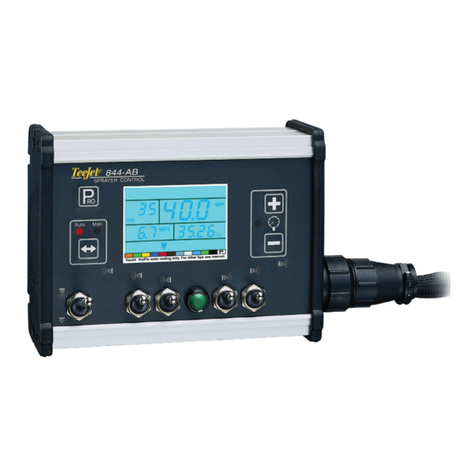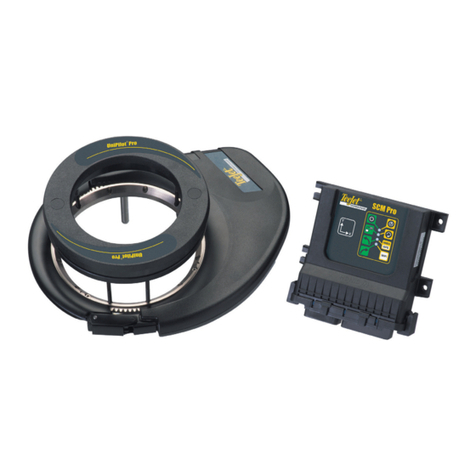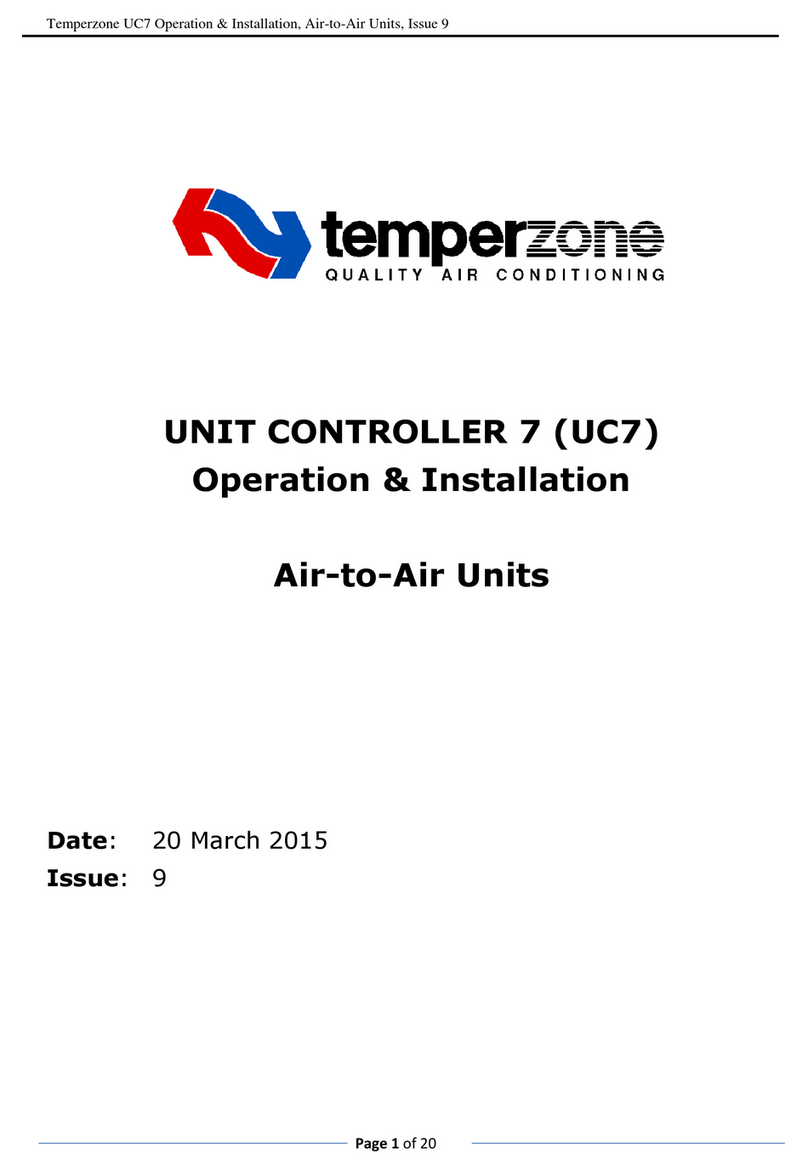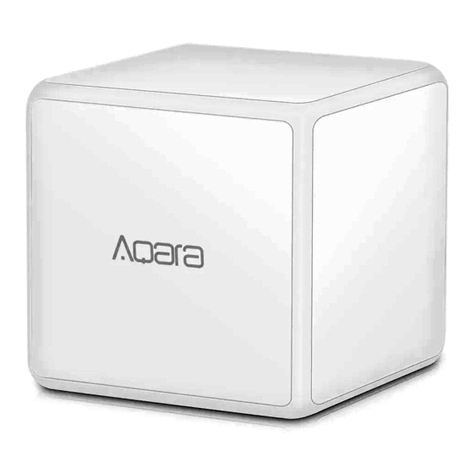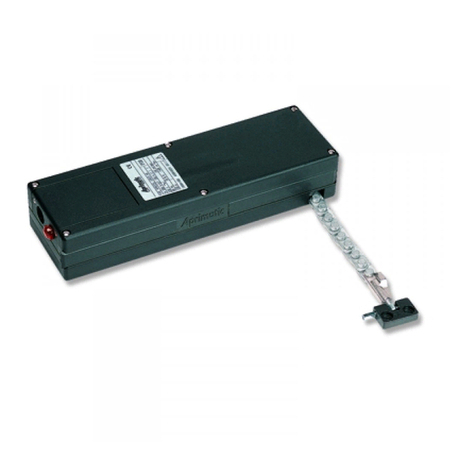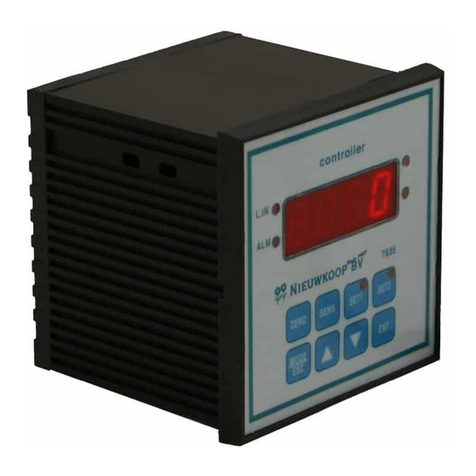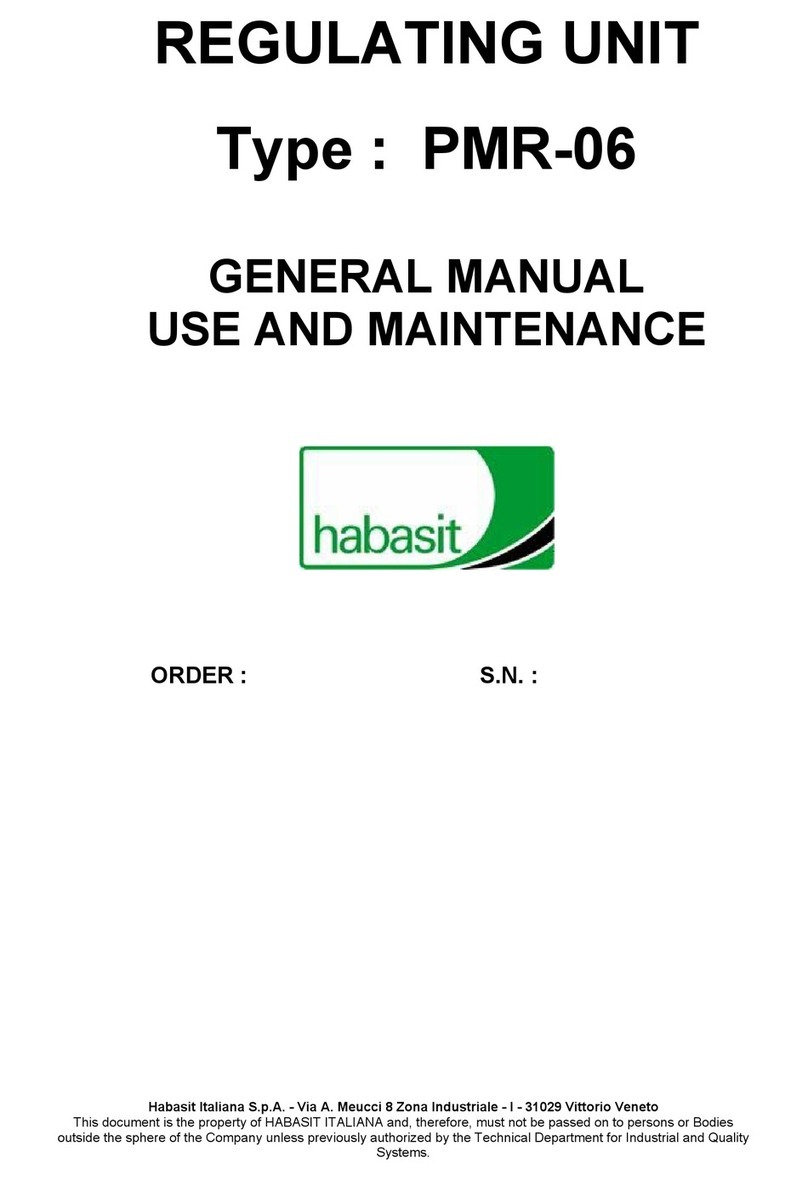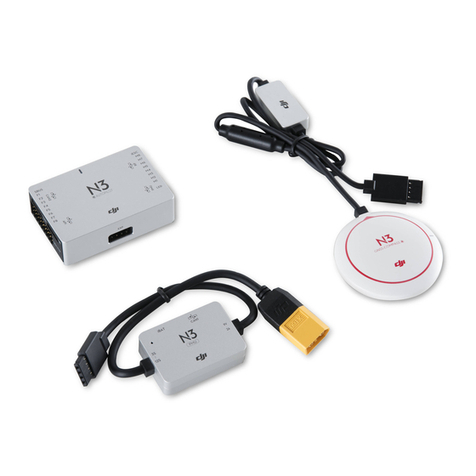TeeJet 855 User manual

Installation,
Programming
and Operating
Manual

Introduction 1
Sprayer Control Installation 2
Mounting Sprayer Components 2
Pressure Regulator in Bypass Mode 2
Pressure Regulator in Throttling Mode 3
Flow meter 4
Boom Control Valves 4
Pressure Transducer 4
Installing the Speed Sensor Assembly 5-7
Mounting the TeeJet 844 Console 7-9
Component Wiring 10-11
Programming Guidelines 12
Steps to Successful Programming 13
System Setup Mode 13
Programming Steps
1Setting the Program Mode - U.S./Turf/NH3/Imperial/S.I. 13
Reset Defaults? 14
2Flow meter or Pressure Based 14
3Flow meter Pulses 14
4Pressure Transducer Maximum Rating (P Hi) 15
5Pressure Transducer Low Pressure Calibration (P rEF) 15
6Nozzle Spacing 15
7Number of Spray Tips Per Boom Section 16
8User Programmable Tip 16-17
9Pressure Regulating Mode 17
10a Coarse Regulation Adjustment Speed 17-18
10b Regulation Adjustment Speed 18
11 Boom Control Valve Type 19
12 Speed Sensor Calibration 19-20
13 Distance Counter 21
14 Simulated Ground Speed 21
15 Liquid Specific Gravity 22
16 Communications 22
17 Minimum Regulating Pressure Setting 23
Application Setup Mode 24
Programming Steps
1Target Application Rate 24
2Nozzle Selection 24-25
3Calculation Step 25-26
Operating Instructions
Sprayer Checkout 27
The Spraying Operation 28
Features
Boost Mode 29
Area/Volume Feature 29
Flow Rate Feature 30
Application Alarm 30
No Flow Alarm 30
Printing 31
Troubleshooting Guide 32-34
Flow meter Calibration 35-36
Flow meter Maintenance Inside Back Cover
Terms and Conditions of Sale Inside Back Cover
Table of Contents
TeeJet is a registered trademark of
Spraying Systems Co.

1
Congratulations! And thank you for choosing Spraying Systems’ advanced
844 sprayer control system.With its proper installation and maintenance, you
can enjoy many seasons of accurate and uniform spray application with
fingertip convenience and ease of operation.
Installation and Programming of your control system will be covered in easy-
to-follow, step-by-step instructions.
Introduction
WE RECOMMENDTHATYOU READTHESE INSTRUCTIONS
COMPLETELY before attempting installation and programming
of your 844 sprayer control.The unit’s performance will
depend on its proper installation and programming, along
with planned preventive maintenance of your entire sprayer.
Easily Accessible
Programming Mode
is very user-friendly. The process
is made simple with a series of
easy-to-follow, symbol-driven
programming steps.
Auto/Manual Control
gives the operator a manual
application option for
fail-safe reliability.
Master Shutoff
controls all boom sections
with one switch.
Color-Coded Tip Selection Bar
allows for easy user programming
by matching the color of TeeJet
VisiFlospray tips.
Aluminum Console Housing
with sealed computer switch
panel resists electronic
interference and damage
through rough handling for
years of reliable service.
Boost Mode
will temporarily increase or
decrease application rates for
special situations, such as in
patches of heavy weeds.
Individual Boom Controls
give independent control of up to five
boom sections. This allows better
management of varying field features,
such as waterways and terraces.
A Large, Backlit Display
continuously displays all vital
spraying functions. With a quick
glance, the display reveals the
application rate (automatically
switches between target and
actual), pressure, speed, area
covered and volume applied.
•Full-featured sprayer control with industry-leading ease of use
•Large backlit display shows all spraying information at a glance
•Color-coded tip selection for easy programming
•Communication Port for PC and GPS interfacing
•Flow or pressure based regulation options provide reliability and flexibility
•Five boom section switches plus master shutoff
•Built in application planning tool
•Durable, weather-resistant aluminum housing
•Single cable connection for quick hookup

2
PRESSURE REGULATOR IN BYPASS MODE
All pressure regulating valves for the 844 will be wired for use in a by-pass
system.While plumbed in a by-pass mode, with the Auto/Man key in the “MAN”
mode, the valve should close when the key is pressed and open when the
key is pressed.
The pressure regulating valve can also be mounted in a throttling situation as an
alternative location. Refer to page 3, and Figures 8 and 8A.
NOTE:The diagrams in Figures 7, 7A, 8 and 8A are shown as general
guidelines to follow when plumbing 844 components.The type of pump
used and location of other components can vary from sprayer to sprayer.
It is important to ensure that if a pressure transducer is used that it is
located as close to the spray tips as possible. Normally this is at the boom
control valves. However, if one particular boom section is always used, the
pressure transducer can be mounted on that particular boom section. If a
flow meter is used, ensure that all of the flow going through the flow meter
is directed to the spray tips. Make sure that proper distance is allowed on
the inlet and outlet side of the flow meter (refer to figures 7A and 8).
Mounting Sprayer Components
FIGURE 7
BYPASS PLUMBING DIAGRAM
PRESSURE BASED SYSTEM
TANK
JET AGITATOR
DIAPHRAGM
PUMP
TANK SHUT-OFF
STRAINER
PRESSURE
REGULATING
VALVE
AGITATOR
VALVE
PRESSURE RELIEF VALVE
PRESSURE
TRANSDUCER
ELECTRIC
BALL VALVES
BOOM SECTIONS
TANK
JET AGITATOR
DIAPHRAGM
PUMP
TANK SHUT-OFF
STRAINER
PRESSURE
REGULATING
VALVE
AGITATOR
VALVE
FLOW METER
5-7”
(12-17 CM)
10-12”
(25-35 CM)
ELECTRIC
BALL VALVES
BOOM SECTIONS
FIGURE 7A
BYPASS PLUMBING DIAGRAM
FLOW BASED SYSTEM
CENTRIFUGAL
PUMP

3
PRESSURE REGULATOR IN
THROTTLING MODE
The pressure regulating valve, as shown in Figures 8 and 8A, can be located in
the supply line before the boom control valves. If you choose this location, the
844 will need to be properly programmed to reverse the polarity of the valve.
This step can be found in the System Setup instructions on page 17.When in
throttling mode, the valve should open when the key is pressed, and close
when the key is pressed. Be sure to check this before plumbing the valve
into the system.
FLOW METER
FIGURE 8
THROTTLING PLUMBING DIAGRAM
FLOW BASED SYSTEM
TANK
JET AGITATOR
CENTRIFUGAL
PUMP
TANK SHUT-OFF
STRAINER
BOOM SECTIONS
SOLENOID VALVES
THROTTLING
VALVE
PRESSURE
REGULATING
VALVE
AGITATOR
VALVE
5-7”
(12-17 CM)
10-12”
(25-35 CM)
FIGURE 8A
THROTTLING PLUMBING DIAGRAM
PRESSURE BASED SYSTEM
SOLENOID VALVES
TANK
JET AGITATOR
CENTRIFUGAL
PUMP
TANK SHUT-OFF
STRAINER
BOOM SECTIONS
THROTTLING
VALVE
PRESSURE
TRANSDUCER
PRESSURE
REGULATING
VALVE
AGITATOR
VALVE

4
FLOW METER
To ensure accurate readings, the flow meter (if used) must be mounted 10˝to 12˝
(25-35 cm) from other pipe fittings, preferably in a vertical position with the flow
going up. It should also be mounted with direction of flow arrow pointing toward
the boom control valves. Refer to Figures 7A and 8.
Be sure the flow meter is plumbed so that all liquid passing through it is routed to
the booms and not back to the tank.When using three-way boom control valves,
refer to page 19 of this manual for programming guidelines.
BOOM CONTROL VALVES
The Boom Control Valves are connected in tandem and centered in front of the
boom sections. See the Control Valve Instruction Manual for mounting
instructions. If using three-way valves, refer to the instruction manual of the
valves you are using for valve calibration instructions.
PRESSURE TRANSDUCER
The pressure transducer (if used) should be installed as close to the spray tips
as possible. Normally this is at the boom control valve assembly. Refer to pages
2 and 3, Figures 7 and 8A. Mount the unit vertically on a short stand pipe to
help protect the sensor.
NOTE: Pressure drop, to some degree, is found in most plumbing systems.
Pressure drop is created when there is any kind of restriction in the spray
line reducing flow rate and is quite often produced between the boom
control valve assembly and the spray tips. If one of the boom sections on
the sprayer is always used, the pressure transducer can be installed on
that particular boom section, therefore minimizing any potential pressure
drops between the sensor and spray tips. If the pressure drop in your
system is greater than 5 psi (0.3 bar), you should consider this as an
alternative location for the pressure transducer.
Check all components to make sure they are mounted securely to avoid
excessive vibration.

5
Components: Two magnets, Sensor with attached connector cable, and
mounting hardware.
If you are installing a radar ground speed sensor, follow the instructions supplied
with that unit.
Location
The speed sensor assembly should
be installed on a non-driven wheel to
avoid potential errors that are likely to
occur from a slipping drive wheel.
Refer to Figure 1.
Proximity Sensor (optional)
An optional proximity sensor is
available to use in cases where space
is limited or for drive shaft mounting.
The proximity sensor will work by
sensing any metal object.The
proximity sensor must be mounted so
that the sensor face is within 1/8 to 3/8
inch (3-10 mm) of the metal object
being read.
Installing the Speed Sensor Assembly
1
SPEED
STEP
FIGURE 1
WHEEL MOUNTING
OF MAGNETIC
SPEED SENSOR
CABLE
MAGNET
RIM
SENSOR
TIRE
FIGURE 2
NOTE:
TARGET FACES
TIRE LUGS

6
Installing the Wheel Magnets
Check for pre-drilled holes in the wheel rim. If pre-drilled holes are not available,
layout a pattern as shown in Figure 4 and drill two 3/8 inch (10 mm) holes,
locating them near the outer edge of the rim, if possible and 180°from each other.
Place the magnets into each of the two holes on the inside rim and securely
fasten using the nuts and washers provided.
Installing the Magnetic Sensor
The flat, pressed L bracket of the wheel speed sensor kit should be secured to a
vertical member near the non-driven wheel.The round, right angle steel bracket
is then secured to the flat bracket with the two U-bolts and necessary hardware
provided.The round, right angle bracket is then used to secure the magnetic
sensor mounting clamp.
The magnetic sensor should be inserted into the mounting clamp and positioned
to within 1/8 to 3/8 inch (3-10 mm) of the wheel magnet.Tighten the sensor
clamp using the clamp screw per Figure 6A.
Your installation will likely vary from the example. It may be necessary to
customize the installation to accommodate your specific machine. Keep in
mind that the two magnets must be spaced an equal distance around the
wheel.The magnetic sensor must be mounted in-line
with the magnets and positioned within 1/8 inch to
3/8 inch (3-10 mm) from each magnet as they
pass the Sensor assembly.
2
SPEED
STEP
3
SPEED
STEP
FIGURE 4 FIGURE 5
MAGNET LOCATIONS MAGNET ASSEMBLY
TIRE
WHEEL
NUT
NUT
MAGNET
WASHER
3/8˝(10 mm)
HOLE FOR
MAGNET
FIGURE 6A
SENSOR ASSEMBLY
CLAMP
SCREW
SENSOR
BRACKET
FIGURE 6
SENSOR MOUNTING
SENSOR
FLAT
L BRACKET

7
Confirming Speed Sensor Installation
Magnetic Wheel Sensor:
After your wheel or proximity sensor is installed and once the 844 console is
installed and powered up, you can test the speed sensor installation. Connect the
wheel speed or proximity sensor to the sensor cable, and in turn connect the
sensor cable to the 844 console.When the connection is made, rotate the wheel
on which the magnets are installed. If using a proximity sensor, you will be
sensing metal objects and not magnets. Each time a magnet (metal object for
proximity sensor) passes the sensor a red LED (orange LED for proximity
sensor) on the back of the sensor will light.The LCD display on the console will
also indicate a speed as the sensor receives and sends electronic pulses.
Radar:
If you are using a radar speed sensor it should be connected to the speed
sensor connector on the sensor end cable. An adapter cable will be necessary
when using most radars and are available through your TeeJet 844 dealer.The
844 will automatically sense if the speed sensor is a wheel speed or proximity
type or radar type sensor during calibration.The 844 is automatically adapted to
most brands of radar speed sensors, provided that the appropriate adapter cable
is used. If using a radar sensor, the 844 will display rAd during the calibration
procedure.
4
SPEED
STEP
MOUNTING THE TEEJET 844 CONSOLE
Location
Determine the best location for the control console in the cab or operator’s
compartment. Allow sufficient clearance, approximately 4-5˝(10-12 cm)
to accommodate for the cable that will be connected to the right side of
the console.
Mounting
Mount the console to a firm support within the cab area, and secure using the
slots provided on the top, back, or bottom of the Console.Although two simple
brackets are supplied with the unit, some additional bracketing may be
necessary.The slots in the 844 will accept 1/4˝(6 mm) bolts.
1
CONSOLE
STEP
2
CONSOLE
STEP
BRACKETS PROVIDE
ANGLE ADJUSTMENT

Power Connection
Locate the power cable which has a black connector on one end, and two battery
terminal rings on the other. Extend the battery terminal ring end of this cable from
the cab to the battery.
Note: Some tractors use two 6Volt batteries as a power source. Make sure
there is a total of 12 Volts delivered to the controller by connecting to the
(+) terminal on one battery and the (-) terminal on the other battery.
Reliable operation of the 844 Sprayer Control depends on a clean power
supply. Ensure this by connecting the power cables directly to the battery
and not to another power source.
Connect the battery terminal rings to the battery posts, making sure that the
positive (red) and negative (black) wires correspond with the polarity of the
battery terminals.
Note: The power cable is designed to provide the simple addition of a remote
master boom switch in a convenient location (i.e. on the throttle, gear shift, or
floor switch).To install a remote boom switch, simply install a switch in the brown
wire in the power cable.The switch should be rated to handle the total current
used by all boom section valves combined. If installed, the remote master switch
will operate in series with the boom switches on the console.
Connect the battery cable to the power cable lead that extends from the main cable.
Test the installation by pressing the key once to turn the 844 console on.
If the display shows information, you have wired the power correctly.
Note:TheTeeJet 844 Sprayer Control has an automatic power down
feature.With the master boom switch in the“off”position, the 844 will
automatically shut down after 10 minutes of no inputs.This prevents
possible battery drainage.To turn the console “off”with the Master Switch
located in the “off”position, press and hold the key while pressing
the key once, and then releasing both keys.The console will shut down
providing no other keys are pressed.
3
CONSOLE
STEP
ONE 12-VOLT BATTERY
RED (POS.)
BLACK (NEG.)
CONSOLE
BATTERY
WIRES
12-VOLT SYSTEM USING
TWO 6-VOLT BATTERIES
RED (POS.)
BLACK (NEG.)
CONSOLE
BATTERY
WIRES
RED (POS.)
BLACK (NEG.)
CONSOLE
BATTERY
WIRES
24-VOLT SYSTEM USING
TWO 12-VOLT BATTERIES
RED (POS.)
BLACK (NEG.)
CONSOLE
BATTERY
WIRES
12-VOLT SYSTEM USING
TWO 6-VOLT BATTERIES
8

9
Connecting Component Cables
Now that you have the console installed you can begin connecting it to the other
components of the 844 system.The standard kit contains a main cable that
attaches to the boom control valves, the pressure regulating valve, flow meter
and/or pressure sensor, and a magnetic wheel speed sensor, proximity speed
sensor or radar speed sensor.
Lay out each of the valve and sensor leads before installing the sprayer
components to be sure the cables are long enough in length from the sensor
connections to the 844 console connection. If your installation requires longer
cables, several extension cables are available.
If an exit hole had to be cut in the cab, be sure the edges are deburred and
protected to prevent damage to the cables.
4
CONSOLE
STEP
844 SPRAYER CONTROL
TANK
POWER
JET AGITATOR SPEED SENSOR
SOLENOID VALVES
BOOM SECTIONS
STRAINER
TANK SHUT-OFF
CENTRIFUGAL
PUMP
AGITATOR
VALVE
PRESSURE
TRANSDUCER
(IF USED)
PRESSURE
REGULATING
VALVE
10-12˝
(25-35 CM)
5-7˝
(12-17 CM)
FLOW METER
(IF USED)
COMMUNICATION
CABLE CONNECTION
MAIN CABLE CONNECTION
FIGURE 9
WIRING DIAGRAM

10
Wiring Layout
Determine the best cable routing to the sprayer control components on the
sprayer.This could be along the flow line, main frame of the sprayer, or wherever
the cables can be conveniently secured. Avoid any situation where the cables
may lay in puddles, or come in contact with extreme heat sources.
Warning: System Components should be mounted at least 3 feet (1 meter)
from areas of excessive vibration (i.e. engines) to avoid high
frequency interference.
1
CONNECT
STEP
SPEED CABLE
PRESSURE CABLE
POWER CABLE
FLOW METER CABLE
REGULATING VALVE CABLE
VALVE LEADS

11
2
CONNECT
STEP
Making the Connections
Now, extend the cable leads to the Flow meter or Pressure Sensor, and Wheel
Sensor or Radar Sensor to the furthest component. Select the appropriate lead
and connect to this component. Run the cable to the other component, taking
care to safely secure the cable along the route. Refer to the diagram on page 10.
Repeat this procedure with the cable leads to the Pressure Regulating Valve
and the Boom Control Valves. Refer to the chart below when attaching the boom
section wires.T-tap connectors must be attached to the +12vDc and ground
wires to connect them to the boom control valves (when using ball valves), which
should be evenly distributed across the two.
If both the flow meter and pressure transducer are not used simultaneously, there
will be one extra connection on the cable. Simply tie this part of the cable back as
it will not be used.
When all connections have been made, connect the large plug into the side of
the Control Console.
You are now ready to begin the programming
of theTeeJet Model 844 Sprayer Control.
Valves requiring DPDT switches are not compatible with the 844.
Note: The 844 is designed to handle a maximum of 4 amps per boom section.
REGULATOR CONNECTOR
Pin No. Wire Color
1White
2Brown
PRESSURE SENSOR CONNECTOR
Pin No. Wire Color Signal Name
1Brown Power Out
2White Pressure Signal
3N/C ———
4N/C ———
CONSOLE CONNECTOR
Pin No. Wire Color Signal Name
BWhite Section 1
CBrown Section 2
DGreen Section 3
EYellow Section 4
FGray Section 5
RWhite Flow Signal
SWhite Pressure Signal
TWhite Speed Signal
VBrown Power Out
aWhite Regulating Valve (+)
bBrown Regulating Valve (+)
cBlue + 12 VDC
dBlue Pink Ground Free End (Valves)
eRed Black + 12 VDC Free End
A
Tba
Z
Y
X
W
V
Uce
d
SRP
N
M
L
K
J
H
G
F
E
DCB
SPEED SENSOR CONNECTOR
Pin No. Wire Color Signal Name
ABrown Power Out
BWhite Speed Signal
CGreen Ground
FLOW SENSOR CONNECTOR
Pin No. Wire Color Signal Name
ABrown Power Out
BWhite Flow Signal
CGreen Sensor Ground PIN END
POWER CONNECTOR
Pin No. Wire Color Signal Name
1Brown + 12 VDC (Computer)
2Blue + 12 VDC (Valves)
3Yellow/Green Ground

12
Programming Guidelines
IMPORTANT PRELIMINARY INFORMATION
Before you begin, we recommend that you review the following Programming
Guidelines that control the programming process:
■For your convenience, the programming of the 844 has been divided
into two programming categories; System Setup Mode and Application
Setup Mode.
■Pressing the key once will flash “”in the upper left hand corner
of the display window.The word “USEr”will be displayed in the lower
right corner indicating you are about to enter the Application Setup
Mode. Pressing the key a second time will put the Control Console
into the Application Setup Mode. If you inadvertently press the key
once, wait for three seconds and the Control Console will return to its
normal operating mode.
■Pressing and holding the and keys while simultaneously
pressing the key once will flash “”in the upper left hand corner
of the display window.The word “PrO”will be displayed at the right of
the display window indicating you are about to enter the System Setup
Mode. Pressing the key a second time will put the Control Console
into the System Setup Mode. A delay of three seconds will return the
Control Console to its normal operating mode.The System Setup
programming steps will likely only need to be programmed once, to
customize the controller to your sprayer.
■For either setup mode, if you press and hold the key for 3
seconds, your inputs will be stored and the computer will exit the
respective setup mode.This action will not be necessary until the last
programming step has been completed.
■To increase the value of a programmable digit, press the key.To
decrease the value, press the key.These keys are located directly
to the right of the display.
For some programming steps, pressing and holding the or key
will change the programmable value rapidly. Pressing the or
key once will change the value by one increment.
Pressing the and keys simultaneously in some programming
steps will set the value to “0”.
■For either setup mode, pressing the key will advance you to the
next programming step.

13
To begin the programming process:
■Read above for programming tips.
■Be sure the “master”boom switch is “OFF.”
■Turn console “ON”by pressing the key. When the Control Console is
turned on, the software version will be displayed at the top of the display and
the serial number will be displayed in the lower half of the display.This
information will be needed when calling for service support.
■To turn the console “off”, press and hold the key while pressing the
key once, and then releasing both keys.The console display will shut
down providing no other keys are depressed.
SYSTEM SETUP MODE
The System Setup Mode contains the programming steps that customize the
controller to the sprayer or sprayer components.These include calibration steps
and parameters that, once programmed, will likely never change.
To enter the System Setup Mode, press and hold the and keys
simultaneously.While holding the and keys in, press the key
twice (within three seconds), and release to enter the System Setup Mode.
The first programming step should be visible.
Setting Your Program Mode
(U.S., Turf, NH3, Imperial, S.I.)
Default = US
The 844 console will display a large “US”in the center of the display.The default
value “US”indicates that all default values will be shown in U.S. measurements,
unless changed to Turf (trF), Anhydrous (nh3), Imperial Gallons (INP), or Metric (SI)
units.Turf units displays information in Gallons per 1000 ft2, NH3displays units in
Pounds of Nitrogen per Acre; Imperial displays units in Imperial Gallons per Acre;
and SI displays all units in metric (l/min, l/ha, km/hr, cm).
If you will be using U.S. measurements no change is necessary, press the
key to advance to the next programming step.
If, however, you will be using one of the other units listed, then press the
or key to select those units you will be using.Press the key to accept the
value and advance to the next program step.
Steps to Successful Programming
Programming the 844 Sprayer Control System
US, trF,
nh3, iNp
si
PROGRAM
UNITS

14
Reset Defaults?
If the units in the first programming step have been changed, the console will ask
if you would like to reset all of the program values to the default settings for the
units selected. If you wish to reset to the defaults, use the or keys to
select “YES”and press the key to activate the resetting process.
If you do not want to reset to the default values, select “no”using the or
keys and press to advance to the next step.
NOTE: If you inadvertently changed the Program Units, select “no”in
this step. Advance to the Program Units step again using the key and
change back to your desired units. Select“no”again at the Reset Defaults
step and exit the program mode by pressing and holding the key for
3 seconds.
Flow Meter or Pressure Based
Default = FLO
The 844 system can be used with either a flow meter, pressure transduce or
both.This step tells the computer which sensor you will be using on your sprayer
to control the flow regulation.
The default value is set for a “FLO”based system using a flow meter. If this is what
you have installed on your sprayer, then press the key to advance to the
next step.
If, however, you have installed a pressure transducer instead, use the or
key to select “PrS”for a pressure based system.Then, press the key to
advance to the next step.
If both sensors have been installed on the sprayer, this step will determine which
sensor will be used by the 844 to determine pressure/flow regulation. If “FLO”is
selected, the flow meter will be used to control the flow and the pressure
transducer will be used only to display the actual pressure. If “PrS”is selected,
the pressure transducer will be used to control the flow and display the actual
pressure.The flow meter signals will be ignored.
Flow meter Pulses
Default = 650
During the Flow meter Calibration Step, the symbol (flow meter turbine) will
be flashing at the top of the console display.
First, locate the factory flow meter pulse rate tag on the flow meter. If this varies
from the default value of the console, use the or keys to modify the value.
Pressing the and keys simultaneously will clear the value to zero.
In some cases, larger flow meters with small calibration numbers will include
decimals for greater accuracy.To add a decimal to the 844 calibration number,
press the Auto/Man key.
If you are not using a flow meter but are using a pressure transducer instead
and have selected“PrS”in the previous step, this step will not appear.
NOTE:This flow meter number represents the number of pulses per liter
of liquid.The 844 console makes all of the necessary conversions if using
units other than metric.The same calibration number will be used for
all units.
flo, prs
SENSOR
TYPE
FLOW METER
CALIBRATION
rES .
dEF
RESET
DEFAULTS

15
Pressure Transducer Maximum Rating (P Hi)
Default = 150 (psi in US, trF and INP Modes)
Default = 10.0 (bar in SI Mode)
This step is used to set the maximum rating of the pressure transducer in your
system.This number can be found stamped on the pressure transducer itself. If
your transducer has a maximum rating of 145 psi (10 bar in SI mode) and that
number is shown in the display, then advance to the next step by pressing the
key. If, however, the maximum rating is 363 psi (25 bar in SI mode), use the
and keys to change the value. Press the key to advance to the next
step.
NOTE: If you are not using a pressure transducer but are using a flow
meter instead, skip this step by pressing , leaving the default value
programmed.
Pressure Transducer Low Pressure Calibration (P rEF)
Default = 4.0
This step is used to calibrate the “0”pressure setting of the pressure transducer
installed in your system.The pressure transducer used with the 844 is a current
type transducer and uses a 4-20 mA reading. 4.0 mA represents 0 pressure.
This step uses an auto-calibration feature to calibrate the transducer. Make sure
that the sprayer pump is off and there is absolutely no pressure in the system.
Press and release the and keys simultaneously to activate the auto-
calibration feature.You will see the message “NES”in the lower left of the display
and the lower right of the display count the numbers “0”through “9”.When the
display finishes counting, a number close to 4.0 should be displayed.The low
pressure value of the transducer is now calibrated.
Press the key to advance to the next step.
NOTE: If you have selected a“FLO”based system, skip this step by pressing
and leave this value at the default of 4.0.
Nozzle Spacing
Default = 20 (inches in US, trF, and INP Modes)
Default = 50 (cm in SI Mode)
Default = 30 (inches in nh3 Mode)
While in the Nozzle Spacing step, the symbol will be flashing at the top of
the console display. Nozzle spacing should be recorded in inches (cm in SI mode).
If the default value is correct, press the key to accept the value. If the nozzle
spacing is different than that shown as a default, then add or reduce this number
by using the or keys to record the new value. Pressing the and
keys simultaneously will clear the value to zero.
When the correct value has been entered, press the key to accept the value
and advance to the next step.
When broadcast or broadacre spraying, enter the nozzle spacing in the display.
If banding, enter the band width as your spacing.
If directed spraying, enter the row spacing divided by the number of nozzles per
row as your spacing.
NOTE: All Application rate readings (US GPA, G/1000 ft2, #N/acre, Imp. GPA,
and l/ha) and area readings are expressed in treated acres (hectares).
150
P i
NOZZLE
SPACING
4.0
P ref

Number of Spray Tips Per Boom Section
Default = 6(tips per section in US, trF,iNp and SI Modes)
Default = 12 (tips per section 1, 0 for the others in nh3 Mode)
While in the Tips Per Boom Section step, the symbol will be flashing at the
top of the console display.The console will also display “SEC 1”at the left and a
number (6) at the right of the display.The “SEC 1”refers to boom section #1 on
your console.The number at the right is to be adjusted to match the number of
tips you have on boom switch 1.
The default value of “6”will appear for all booms sections.The next five
programming steps are Number of Spray Tips Per Boom Section steps.These
steps correspond with the five boom switches on the lower portion of the
console.The section you are programming can be identified by looking at the
SEC # at the left of the display.
You must program the correct number of spray tips for each boom section on
your sprayer. Use the or keys to produce the correct value. Pressing
the and keys simultaneously will clear the value to zero.
Advance to the next step by pressing the key.This must be done for all
Number of Spray Tips Per Boom Section steps .
Any individual boom switches not being used must be programmed to a “0”
value.When you have programmed and validated the last Number of Spray Tips
Per Boom Section step, advance to the next program step by pressing the
key.
User Programmable Tip
Default = 0.00
While in the User Programmable Tip step, the symbol will be flashing above
the Ptab at the bottom of the display.
In some cases you may find that nozzles other than those pre-programmed
for the 844 Sprayer Control will need to be used. If one of the eleven
pre-programmed tips do not meet your needs, this programming step allows
the user to program a tip.
Use the or key to adjust flow rate in US Gallons Per Minute (Liters Per
Minute) {Imperial Gallons Per Minute} at 40 psi (2 bar). Pressing the and
keys simultaneously will clear the value to zero.To accept the value,
press the key to advance to the next programming step.
The flow rate information for the tip is only used to calculate the pressure reading
for flow based controls.With non-linear tips, the calculation would be incorrect.
Therefore we recommend a “0.00”setting for non linear tips so that the pressure
will read “0”at all times, instead of an inaccurate pressure. Non linear tips should
not be used with pressure based controls. Pressure based controls use the tip
flow rate information to adjust the pressure to achieve the right application rate
based on the size of the tips.With non linear tips, there is no way for the
controller to accurately calculate what the pressure should be at various speeds.
16
P
USER
PROGRAM
TIP
TIPS PER
BOOM
SECTION

17
Warning: If the user is using tips other than the TeeJet®‚VisiFlo®‚brand,
the corresponding colors may not match. In this case, the user should
determine the flow rate of the tip being used at 40 psi (2 bar), and enter
this flow rate as the programmable tip.
NOTE:The flow rate will automatically be displayed at 40 psi (2 bar).
This pressure must be used for determining your tip’s flow rate. Actual
operation pressure is not important.
When the correct nozzle flow rate has been entered, advance to the next
programming step by pressing the key.
Pressure Regulating Mode
Default = byp (By-pass for US, trF, INP, and SI Modes)
Default = thr (Throttling for nh3 Mode)
While in the Pressure Regulating Mode step, the symbol will be flashing at
the top of the console display.
This step tells the 844 where the regulating valve has been plumbed. Once set
correctly, this value should not change unless the regulating valve is physically
moved to a new point in the plumbing.For more information on plumbing refer to
page 2 and 3 of this manual.
The default value “bYP”indicates that the pressure regulating valve is plumbed
in the bypass line. In most situations, especially total flows below 4 US GPM
(15 l/min) {3.3 Imperial GPM}, this is the preferred installation position. If the
default is correct, press the key to accept the value and advance to the
next step.
NOTE:When programmed in the bypass mode, with the controller in
“MAN”mode, the pressure regulating valve should close when the key
is pressed, and open when the key is pressed.
The pressure regulating valve can be located in the supply
line between the flow
meter and the boom control valves. If you will be locating the pressure regulating
valve in this position, use the or keys to change the value to t r
(Throttling Mode). By doing this, you have reversed the polarity that the console
uses to control the regulating valve.
NOTE:When programmed in the throttling mode with the controller in
“MAN”mode, the valve should open when the key is pressed and
close when the is pressed.
Press the key to advance to the next step.
Coarse Regulation Adjustment Speed
Default = 9
While in this step, the symbol will be flashing at the top of the console display.
This step allows you to regulate the speed of the pressure regulating valve to
accommodate different application needs.
Operating conditions may necessitate a higher or lower response speed for the
regulating valve.To change the response time number, simply use the and
keys to increase or decrease the number. Any number between 0 and 9 can
be selected.This digit sets the speed for coarse adjustments in relation to a large
percentage outside of the target application rate.
PRESSURE
REGULATION
MODE
REGULATION
ADJUSTMENT
SPEED

18
If your system is plumbed in a bypass mode, the valve speed number of 9 works
very well in most applications.
If your system is plumbed in a throttling mode, start with a valve speed number
of 3 and adjust the number according to your application requirements. Low flow
situations will require a slower response time. Adjusting agitation volumes to
accommodate the regulating valve to work in a more fully open position allows for
a faster response time, with little to no searching.
To accept this value and advance to the next step, press the key.
NOTE:This speed value can be adjusted to optimize system performance.
If you notice that the valve seems to “search”for the programmed
application rate by cycling the pressure up and down continuously, reduce
the number until the “searching”is minimized or eliminated. Conversely, a
higher number will increase the valve response speed and speed up the
rate of adjustment.
Fine Regulation Adjustment Speed
Default = 5
While in this step, the symbol will be flashing at the top of the console display.
This step allows you to regulate the speed of the pressure regulating valve to
accommodate different application needs.
Operating conditions may necessitate a higher or lower response speed for the
regulating valve.To change the response time number, simply use the and
keys to increase or decrease the number. Any number between 0 and 9 can
be selected.This digit sets the speed for the fine tune adjustment in relation to a
small percentage close to the target application rate.
If your system is plumbed in a bypass mode, the valve speed number of 5 works
very well in most applications.
If your system is plumbed in a throttling mode, start with a valve speed number
of 3 and adjust the number according to your application requirements. Low flow
situations will require a slower response time. Adjusting agitation volumes
to accommodate the regulating valve to work in a more fully open position
allows for a faster response time, with little to no searching.
To accept this value and advance to the next step, press the key.
NOTE:This speed value can be adjusted to optimize system performance.
If you notice that the valve seems to “search”for the programmed
application rate by cycling the pressure up and down continuously, reduce
the number until the “searching”is minimized or eliminated. Conversely, a
higher number will increase the valve response speed and speed up the
rate of adjustment.
REGULATION
ADJUSTMENT
SPEED
Table of contents
Other TeeJet Controllers manuals
Popular Controllers manuals by other brands

Ss Brewtech
Ss Brewtech FTSs2 Product guide
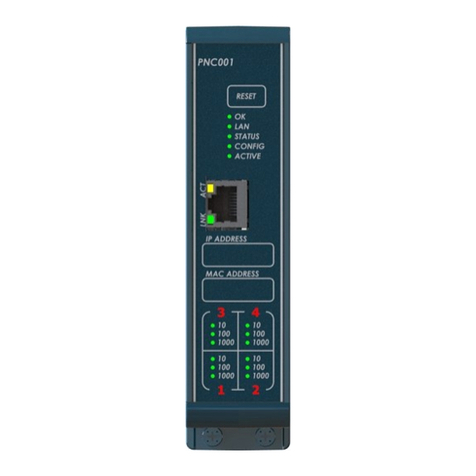
Emerson
Emerson PACSystems RX3i Important product information

Kohzu Precision
Kohzu Precision KOSMOS series user manual

cashco
cashco PGR-2 Installation, operation & maintenance manual

Mitsubishi Electric
Mitsubishi Electric Q173CPU user manual

Oase
Oase Eco Control operating instructions

Mitsubishi Electric
Mitsubishi Electric MELSEC Q Series Reference manual

LEGRAND
LEGRAND Wattstopper DLM LMJA-8 Series installation instructions
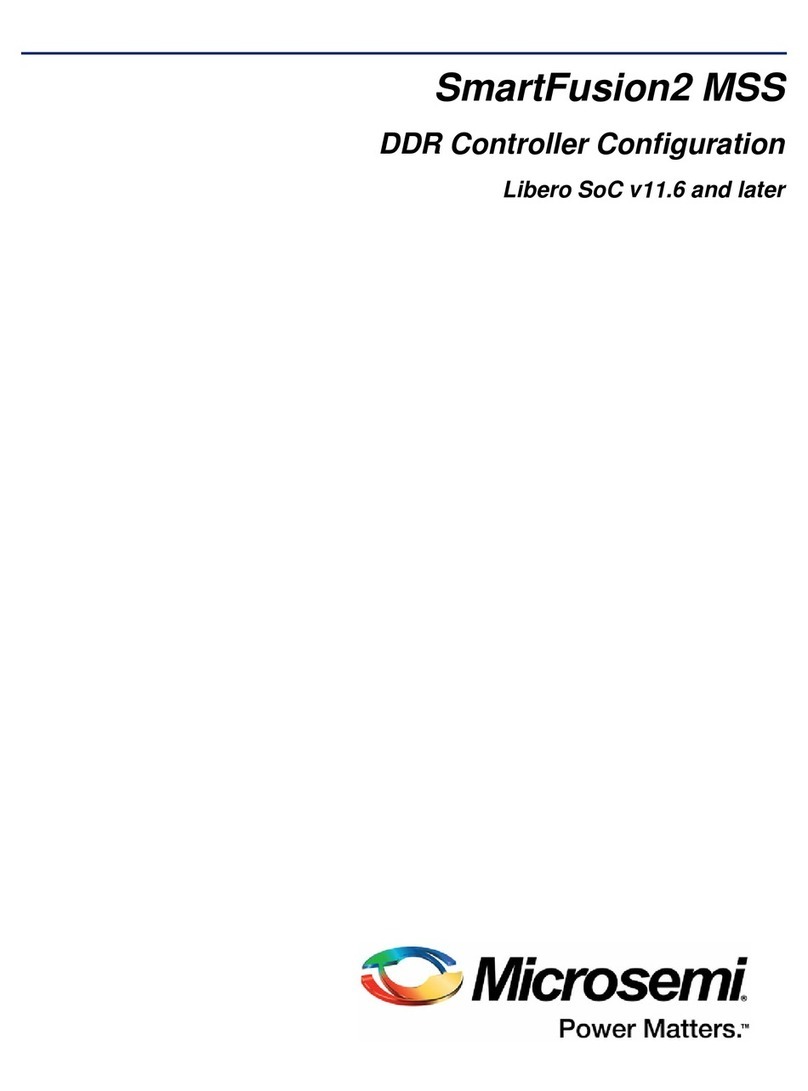
Microsemi
Microsemi SmartFusion2 MSS Configuration guide
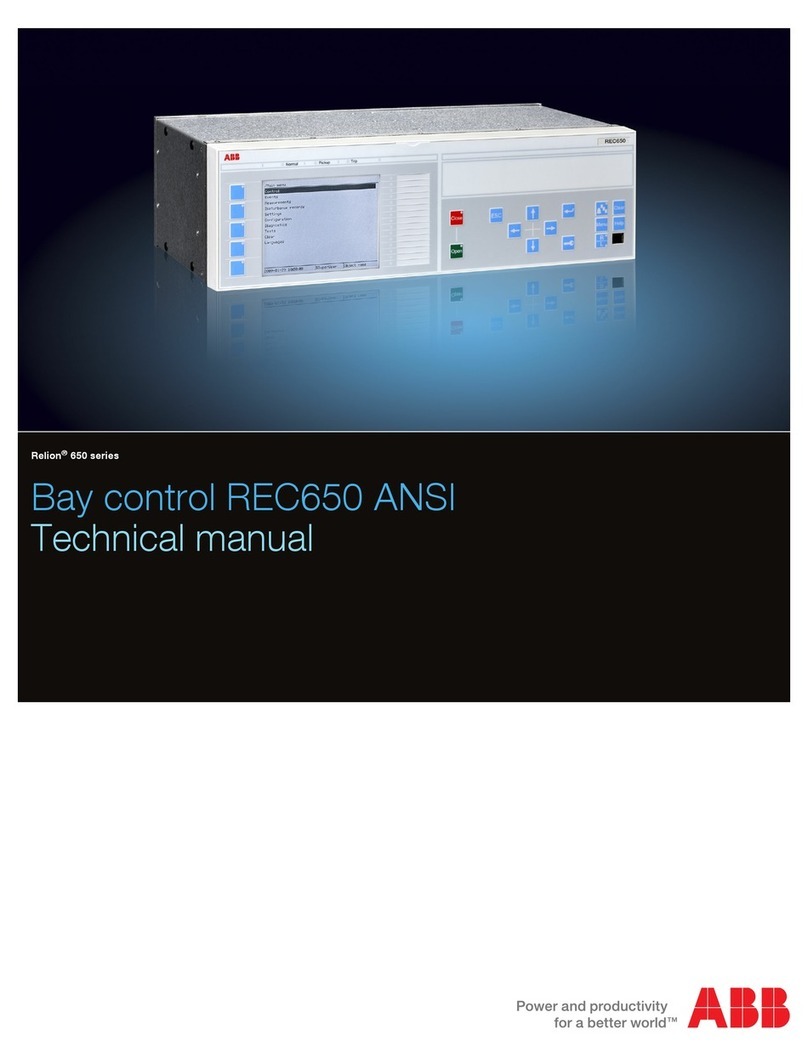
ABB
ABB REC650 ANSI Technical manual
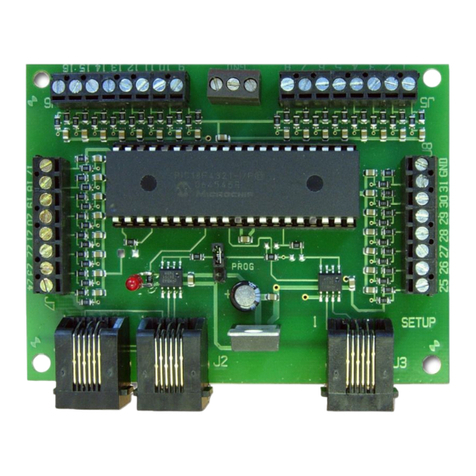
NCE
NCE Mini-Panel Instruction
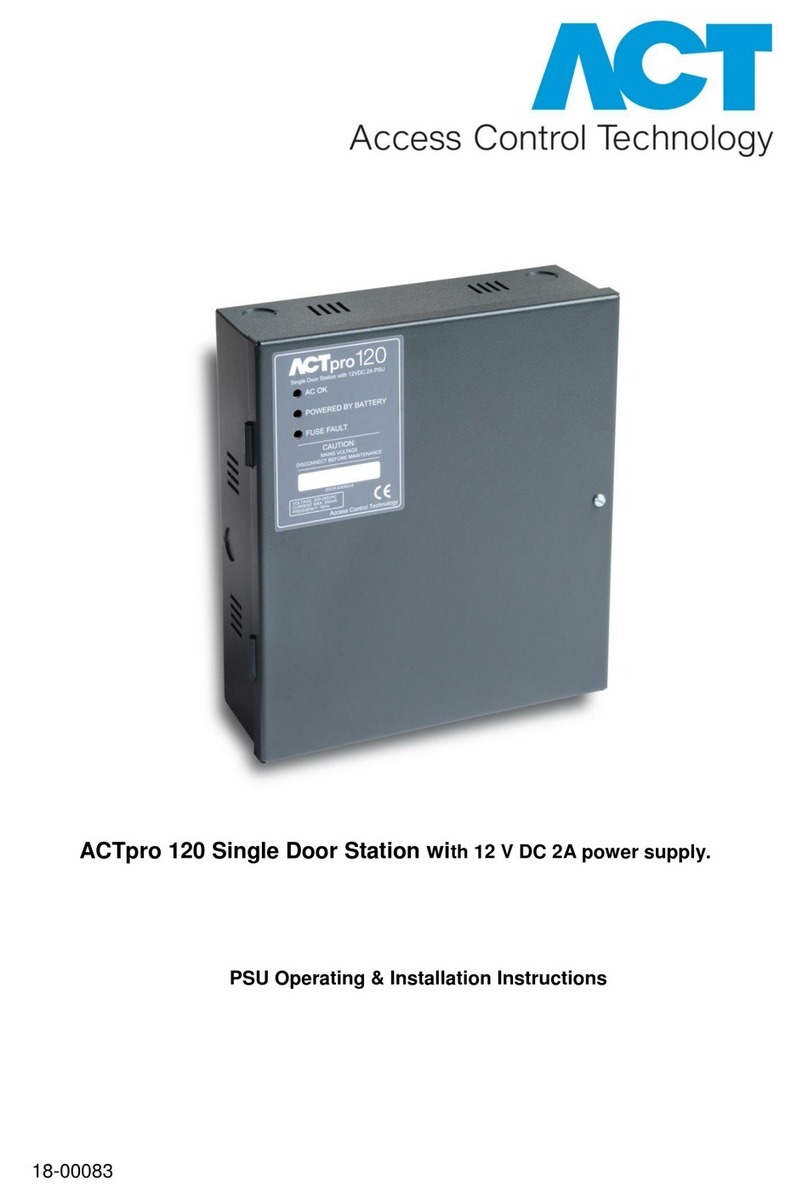
ACT
ACT ACTPRO PRODUCT RANGE Operating & installation instructions
